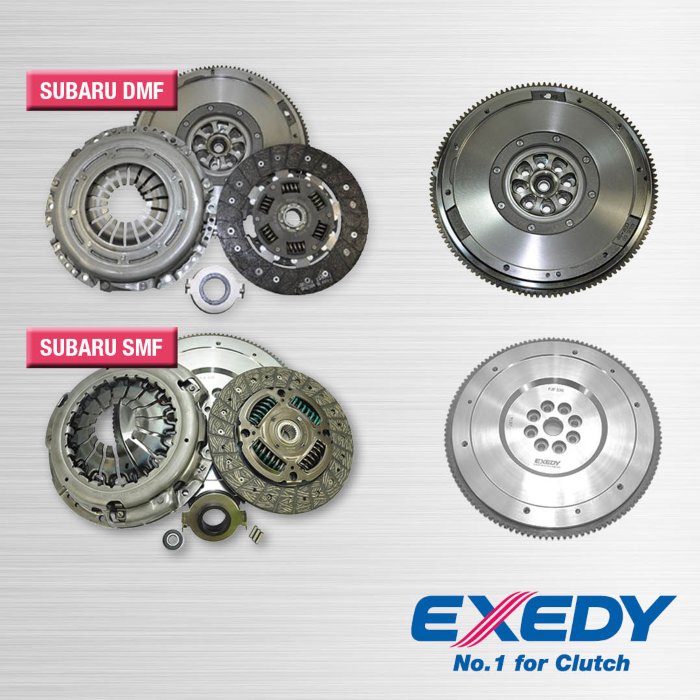
The Dual Mass Flywheel (DMF) derives its name from the two main components (masses) that operate independently of each other. The primary component is fitted with a ring gear and sensor ring (if applicable) and is attached to the crankshaft. This primary component usually incorporates a dampening mechanism made up of torsion springs and friction washers that are ideally suited to absorb torsional vibrations within the drivetrain. The clutch unit is then bolted onto the secondary component. Simply, a DMF is a damper for your drivetrain.
A DMF can fail for a number of reasons, the most common cause will be wear and tear. Like any other component on a vehicle, the DMF will wear out over time. Other causes of failure may relate to driving technique, overloading the drivetrain when towing or increasing the engine torque to a point where it exceeds the capacity of the flywheel.
DMF specifications vary between different manufacturers and as such, there is no single test that indicates whether the DMF has reached the end of its service life. There are however some generic tell-tale signs that indicate to the installer that the DMF should be replaced such as grease/oil leaks or noisy operation. The best and safest option is to replace the DMF each time the clutch is replaced. It is important that you do not grind, machine or attempt to repair a DMF. These actions are fraught with danger as it is not possible to machine or grind the flywheel surface accurately without removing the secondary component from the primary mass. Attempting to machine or rebuild a worn DMF will usually result in the premature failure of not only the flywheel but the clutch as well.
The replacement of a worn DMF system with another DMF package is an obvious option. However, the cost of this option is sometimes prohibitive. EXEDY has developed a range of Single Mass Flywheels (SMF) which are sold together with the cover, disc and release bearing or CSC to replace the DMF system. The main advantage of an SMF package is the price – they are generally cheaper to purchase. As the SMF has no moving components, they can be machined and re-installed into the vehicle when a new clutch is fitted, reducing the future maintenance cost of the clutch. The SMF is extremely robust and are the preferred choice for racing or commercial applications. While the SMF system is a popular choice, it’s important to note that despite the durability and price advantages, the SMF systems do not possess the same dampening characteristics as a DMF and may not sound or feel like the DMF system that is being replaced. Therefore, when recommending a replacement clutch and flywheel system you should communicate to your customer the pros and cons of replacing the DMF or of fitting a SMF in its place. This will enable your customer to make an informed decision regarding which replacement system best suits their budget and needs.
EXEDY stocks a wide range of DMF and SMF clutches. Further info is available online or by calling 1300 366 592. To keep up with all the latest news, make sure you follow EXEDY on Facebook and check out their website at exedy.com.au
This article is brought to you by Exedy